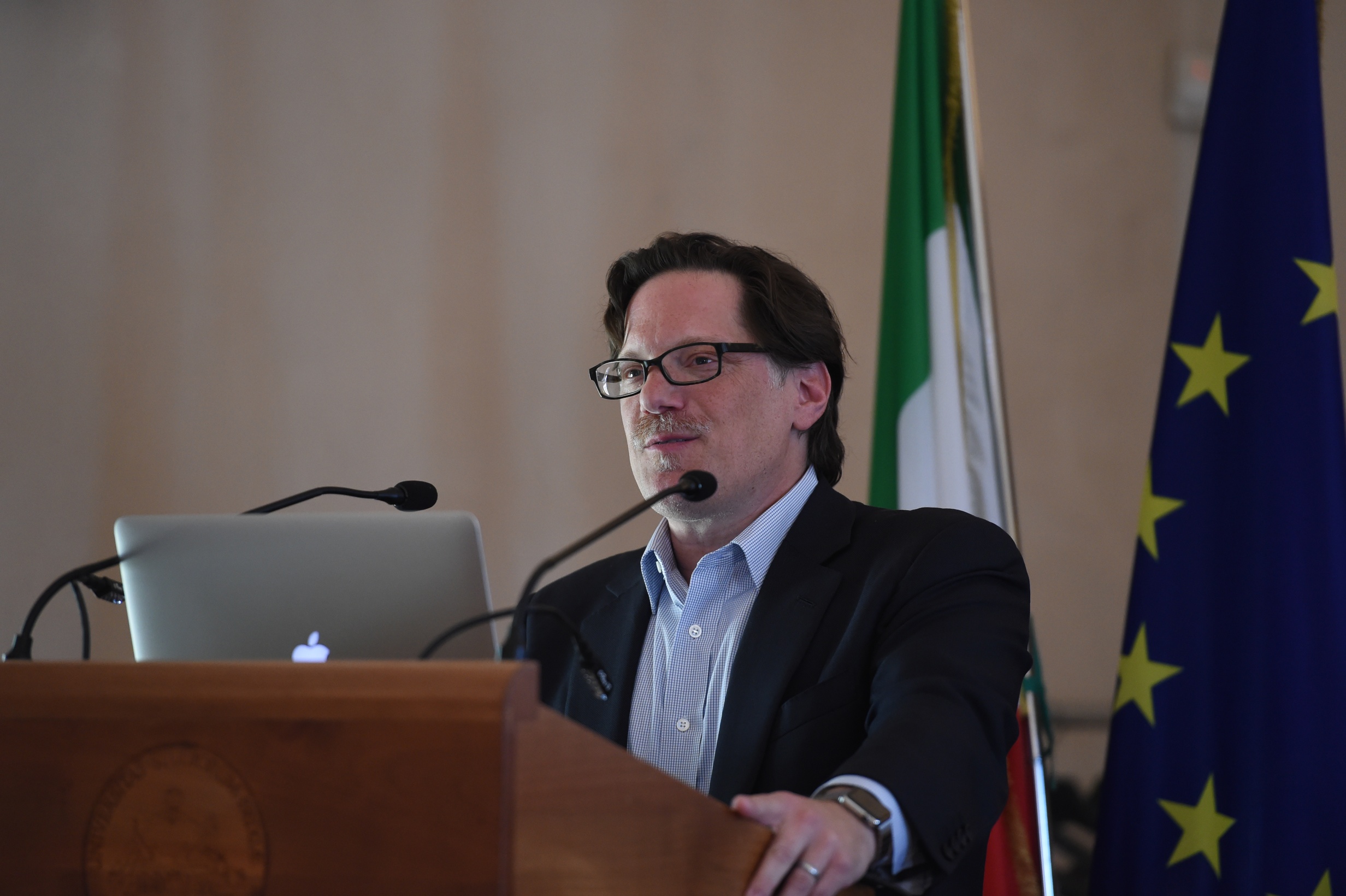Conferences Editions
Roger Stein
Drawing the line for risk stratifications
Nobels, Economists and Scientists for Covid-19
Speakers
Roger Stein
Mit
I.S.E.O. Institute is partnering with Università degli Studi di Brescia for the project “Nobels, Economists and Scientists for Covid-19”: a gathering of articles, essays and short videos by Nobel Laureates in Economics, economists and scientists from all over the world willing to give their contribute to comprehend what effects the Covid-19 spread will have on our lives and economies. We will be regularly publishing columns on our website (under the section Conferences/Covid) and on the webpage of University of Brescia. As you all know, our area is at the heart of the Coronavirus spreading: and with all our events suspended, we felt like we had to carry on our activity anyway. This is exactly the mission our beloved founder Franco Modigliani wanted the I.S.E.O. Institute to have: help understanding global economy. If we can’t do it by promoting conferences and Summer Schools because of the virus, we can do it by sharing distinguished and respected economists’ views on the web, reaching a huge and worldwide audience.
Drawing the line for risk stratifications. Designing return-to-work policies that consider diagnostic error,costs, benefits and COVID-19

Abstract (full paper at the bottom of the page)
The COVID-19 pandemic of 2019 and 2020 has brought to a standstill normal life andcommerce in many parts of the world. This has left policymakers challenged to determinewhen and how to return workers to the workforce while also balancing critical public healthissues and minimizing additional harm. A number of recent proposals have suggested usingrisk stratification strategies to classify members of the public into “higher” and “lower” risktiers. This article describes practical methods for creating risk stratifications using currentlyavailable information which can be updated over time. In this context, we discuss three keyobservations: (1) Any policy to risk stratify individuals involves implicit or explicit trade-offs(e.g.,harm from morbidity/mortality vs. harm from economic impact on health due to self-isolation), regardless of whether risk is measured using diagnostic tests, predictive models, orexpert judgement. (2) Policies can be designed to minimize the harm caused by such trade-offsand failing to do so will directly result in unnecessary harm for the population. (3) Policiescan be designed to take advantage of whatever information is available at a given time, andcan incorporate different testing protocols within a single framework (e.g., virology tests wherethey are available, and age-based criteria when they are not). We demonstrate each of thesepoints.We provide a set of simplecalculation templatesthat policymakers can use to discuss riskstratification policies with the objective of developingTotal Harm Minimizationpolicies. Wehave also provided aweb-basedtool-set that implements these methods, and which is availablepublicly.Using these approaches, for example, a policymaker can input assumptions about riskstratification needs and community priorities, and get as output a risk stratification policythat minimized health and economic harm, given the community priorities. This allows poli-cymakers to assess the advisability of a range of important options for bringing communitiesback on-line, as well as for making decisions, such as whether to invest in more accurate testsor gather more detailed data.
I.S.E.O. Institute is partnering with Università degli Studi di Brescia for the project “Nobels, Economists and Scientists for Covid-19”: a gathering of articles, essays and short videos by Nobel Laureates in Economics, economists and scientists from all over the world willing to give their contribute to comprehend what effects the Covid-19 spread will have on our lives and economies. We will be regularly publishing columns on our website (under the section Conferences/Covid) and on the webpage of University of Brescia. As you all know, our area is at the heart of the Coronavirus spreading: and with all our events suspended, we felt like we had to carry on our activity anyway. This is exactly the mission our beloved founder Franco Modigliani wanted the I.S.E.O. Institute to have: help understanding global economy. If we can’t do it by promoting conferences and Summer Schools because of the virus, we can do it by sharing distinguished and respected economists’ views on the web, reaching a huge and worldwide audience.
Drawing the line for risk stratifications. Designing return-to-work policies that consider diagnostic error,costs, benefits and COVID-19

Abstract (full paper at the bottom of the page)
The COVID-19 pandemic of 2019 and 2020 has brought to a standstill normal life andcommerce in many parts of the world. This has left policymakers challenged to determinewhen and how to return workers to the workforce while also balancing critical public healthissues and minimizing additional harm. A number of recent proposals have suggested usingrisk stratification strategies to classify members of the public into “higher” and “lower” risktiers. This article describes practical methods for creating risk stratifications using currentlyavailable information which can be updated over time. In this context, we discuss three keyobservations: (1) Any policy to risk stratify individuals involves implicit or explicit trade-offs(e.g.,harm from morbidity/mortality vs. harm from economic impact on health due to self-isolation), regardless of whether risk is measured using diagnostic tests, predictive models, orexpert judgement. (2) Policies can be designed to minimize the harm caused by such trade-offsand failing to do so will directly result in unnecessary harm for the population. (3) Policiescan be designed to take advantage of whatever information is available at a given time, andcan incorporate different testing protocols within a single framework (e.g., virology tests wherethey are available, and age-based criteria when they are not). We demonstrate each of thesepoints.We provide a set of simplecalculation templatesthat policymakers can use to discuss riskstratification policies with the objective of developingTotal Harm Minimizationpolicies. Wehave also provided aweb-basedtool-set that implements these methods, and which is availablepublicly.Using these approaches, for example, a policymaker can input assumptions about riskstratification needs and community priorities, and get as output a risk stratification policythat minimized health and economic harm, given the community priorities. This allows poli-cymakers to assess the advisability of a range of important options for bringing communitiesback on-line, as well as for making decisions, such as whether to invest in more accurate testsor gather more detailed data.
Downloadable documents
Drawing the line for risk stratifications by Roger Stein
Download